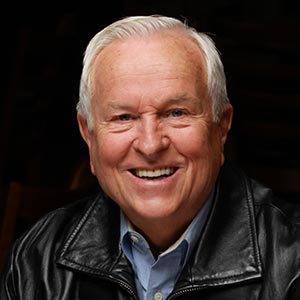My name is Matthew. I’m a speaker and author with Josh McDowell Ministry. After you watch this video, feel free to leave a comment here or via my social channels, listed below. I’d love to hear from you and be a small part of your wrestling with these important questions about Jesus. I also invite you to subscribe to my channel!
Gospel Contradict in Details? | Are the Gospels Reliable?
Welcome to video eight in our series of the historical reliability of the Gospels. So far I’ve spoken generally about why we can trust the Gospels. In this video let’s ask: “Are the details in Matthew, Mark, Luke, and John consistent with one another?”
From the perspective that all Bible text is true, there should be no major contradictions between the four Gospels. Skeptics assert that the four Gospels can’t be trusted, however, because when compared there are inconsistencies. Some examples they cite:
~ The family tree of Jesus differs in Matthew and Luke: Some names are missing, other names are added.
~ Each Gospel records different people at Jesus’ empty tomb.
~ When Jesus is tempted by Satan three times, Matthew and Luke arrange the temptations in different orders.
~ When Jesus gives His famous sermon, Matthew tells us that it takes place on a mountain. But Luke records that it occurs “on a level place.”
~ Matthew writes that a Roman centurion asks Jesus to heal his paralyzed servant. But Luke notes that two elders approach Jesus to make the plea on the centurion’s behalf.
Okay, there are some differences. But from a historical perspective, we should be willing to accept that a document can still be trustworthy, even if some inconsistencies are present. Remember: inconsistencies don’t necessarily translate to being contradictions.
Think of it this way: If four survivors were to describe their experience of being on the Titanic the night that she hit an iceberg and began to sink, we’d see inconsistencies in their personal stories. They might not get every detail right. And they’d miss some details. Each person would focus on the details they want us to know. Yet from their individual testimonies, we gain a more complete picture of all that happened. The same is true if you were in a car accident. You, the driver who hit you, and the onsite witnesses would each tell a different version of what happened. But taken together, you’d be able to piece together the full picture.
To judge the four Gospels as being untrustworthy because they don’t match, detail for detail, is not a strong argument.
Four Important Points
As we consider these and other differences in the Gospel versions, let’s keep these points in mind:
First: Differences don’t necessarily equate to contradictions.
None of the four Gospel writers claim to be providing a complete list of who visited Jesus’ empty tomb. They simply chose to focus on different people as they share the Good News that Jesus resurrected, as He said He would.
Second: These writers weren’t so concerned about chronology.
Each writer chose how to present the information they thought important to include. Perhaps they had theological lessons in mind as they assembled their material.
Third: Some contradictions are not hard to harmonize, if you take the time to think about them.
Matthew describes Jesus giving his sermon on a mountain. Luke says it occurred on a flat location. Perhaps because it was a flat area on a mountain. In studying the Greek wording between the books of Matthew and Luke, New Testament scholar D.A. Carson concluded that Matthew’s “mountain” probably means “hill country” and Luke’s “plain” commonly refers to a plateau in a mountainous region. There’s no contradiction here.
Fourth: As Carson shows us, sometimes contradictions are easily explained as we dig deeper into research.
Specific to whether the Roman centurion showed up in person 0r sent others to make his request, New Testament scholar Leon Morris noted, “It is better to see Matthew as abbreviating the story and leaving out details inessential to his purpose. What a man does through agents he may be said to do himself. So Matthew simply gives the gist of the centurion’s communication to Jesus, whereas Luke in greater detail gives the actual sequence of events.” We can apply this to the details shared about Jesus’ family tree, as well.
The Gospel writers were not modern day journalists. If we read the Gospels with the standard of their intent, we are able to see that the apparent inconsistencies can be reasonably resolved. Too, the differences in the Gospels serve to give each book credibility as being a unique perspective.
If all four Gospels conveyed the exact same details, we wouldn’t have four accounts. We’d have one account told four times. The Gospels are different enough to show us that they are independent sources, but similar enough to show us that the inconsistencies aren’t contradictions. We can have a high degree of trust in them.
In my next video, let’s look at the Gospels in light of what scholarly research tells us about the people, places, and events in which they are situated. See you then!
ENGAGE WITH MATTHEW
Josh McDowell Ministry:
Matthew’s Josh McDowell Ministry Speaker Page
Social Links:
Facebook
Twitter
YouTube
Instagram













